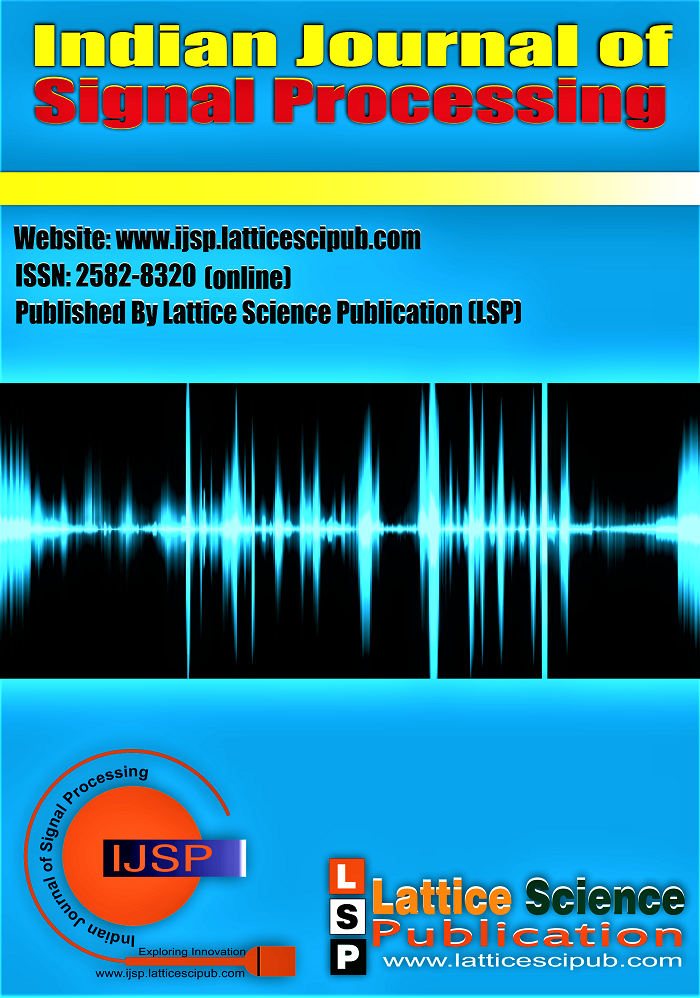Performance Analysis of Cognitive Radios in a Cooperative Scheme over Nakagami Fading Channels
Main Article Content
Abstract
Radio spectrum is a primary requisite for wireless technologies and sensor networks. Due to the high demand and expense of the radio spectrum, it is guaranteed to extend its efficient utilization it. To expand the effective operation and serviceability of the radio spectrum in wireless communications, the notion of Cognitive Radio (CR) is presented in where the licensed spectrum of Primary User (PU) is used opportunistically by unlicensed CR users without interfering with the prioritized PU data transmission. Usually, a CR system is applied to detect empty radio bands by exploiting well-known spectrum sensing schemes and then unused spectrum is opportunistically used by the CR system. Various channels fading of the radio environment are to be considered while introducing different spectrum sensing approaches. In this regard, sensing time to find a vacant radio spectrum should be maintained minimum to reliably get the desired throughput. In this paper, an agreement issue is addressed between the time required for effective spectrum sensing and the achievable throughput of the CR network. Our proposed model illustrates the achievable throughput of CR node in cooperation provides better performance than stand-alone CR node. This is achieved by addressing the variation of the number of nodes under the Nakagami fading distribution. In conclusion, the maximum throughputs of the cooperative CR nodes are guaranteed as per simulation and data analysis.
Downloads
Article Details

This work is licensed under a Creative Commons Attribution-NonCommercial-NoDerivatives 4.0 International License.
How to Cite
References
Y. Liang, Y. Zeng, E. C. Y. Peh, and A. T. Hoang, “Sensing-Throughput Tradeoff for Cognitive Radio Networks,” IEEE Transactions on
Wireless Communications, vol. 7, no. 4, pp. 1326–1337, Apr. 2008, doi: 10.1109/TWC.2008.060869. [CrossRef]
D. Čabrić, S. Mishra, D. Willkomm, R. Brodersen, and A. Wolisz, “A cognitive radio approach for usage of virtual unlicensed spectrum,”
Berkeley Wireless Research Center White Paper, Jan. 2005.
H. Urkowitz, “Energy detection of unknown deterministic signals,” Proceedings of the IEEE, vol. 55, no. 4, pp. 523–531, Apr. 1967, doi:
1109/PROC.1967.5573. [CrossRef]
S. S. N, C. Cordeiro, and K. Challapali, “Spectrum agile radios: utilization and sensing architectures,” in First IEEE International
Symposium on New Frontiers in Dynamic Spectrum Access Networks, 2005. Dyspan 2005., Nov. 2005, pp. 160–169. Doi:
1109/DYSPAN.2005.1542631. [CrossRef]
Sk. S. Alam, M. Lucio, and C. S. Regazzoni, “Opportunistic Spectrum Access of Sparse Wideband in Stand-Alone and Cooperative Cognitive
Radio Networks,” in 2015 IEEE International Conference on Smart City/socialcom/sustaincom (smartcity), Dec. 2015, pp. 811–813. Doi:
1109/smartcity.2015.167. [CrossRef]
M. O. Mughal, A. Razi, S. S. Alam, L. Marcenaro, and C. S. Regazzoni, “Analysis of Energy Detector in Cooperative Relay Networks for
Cognitive Radios,” in 2013 Seventh International Conference on Next Generation Mobile Apps, Services and Technologies, Sep. 2013, pp.
–225. Doi: 10.1109/NGMAST.2013.47. [CrossRef]
S. Alam & S. Mallick, “Analysis of Throughput in Narrowband Cognitive Radio Networks over Fading Channels: A Collaborative
Spectrum Sensing Approach,” Aug. 2021. Http://www.red.pe.org.pl/articles/2021/8/18.pdf (accessed Jul. 30,
. [CrossRef]
A. Goldsmith, Ed., “Statistical Multipath Channel Models,” in Wireless Communications, Cambridge: Cambridge University Press, 2005, pp.
–98. Doi: 10.1017/CBO9780511841224.004. [CrossRef]
Ruixin Niu, Biao Chen, and P. K. Varshney, “Fusion of decisions transmitted over Rayleigh fading channels in wireless sensor networks,”
IEEE Trans. Signal Process., vol. 54, no. 3, pp. 1018–1027, Mar. 2006, doi: 10.1109/TSP.2005.863033. [CrossRef]
T. Yucek and H. Arslan, “A survey of spectrum sensing algorithms for cognitive radio applications,” IEEE Communications Surveys Tutorials,
vol. 11, no. 1, pp. 116–130, First 2009, doi: 10.1109/SURV.2009.090109. [CrossRef]
J. Duan and Y. Li, “Performance analysis of cooperative spectrum sensing in different fading channels,” in 2010 2nd International
Conference on Computer Engineering and Technology, Apr. 2010, vol. 3, pp. V3-64-V3-68. Doi: 10.1109/ICCET.2010.5485771. [CrossRef]





